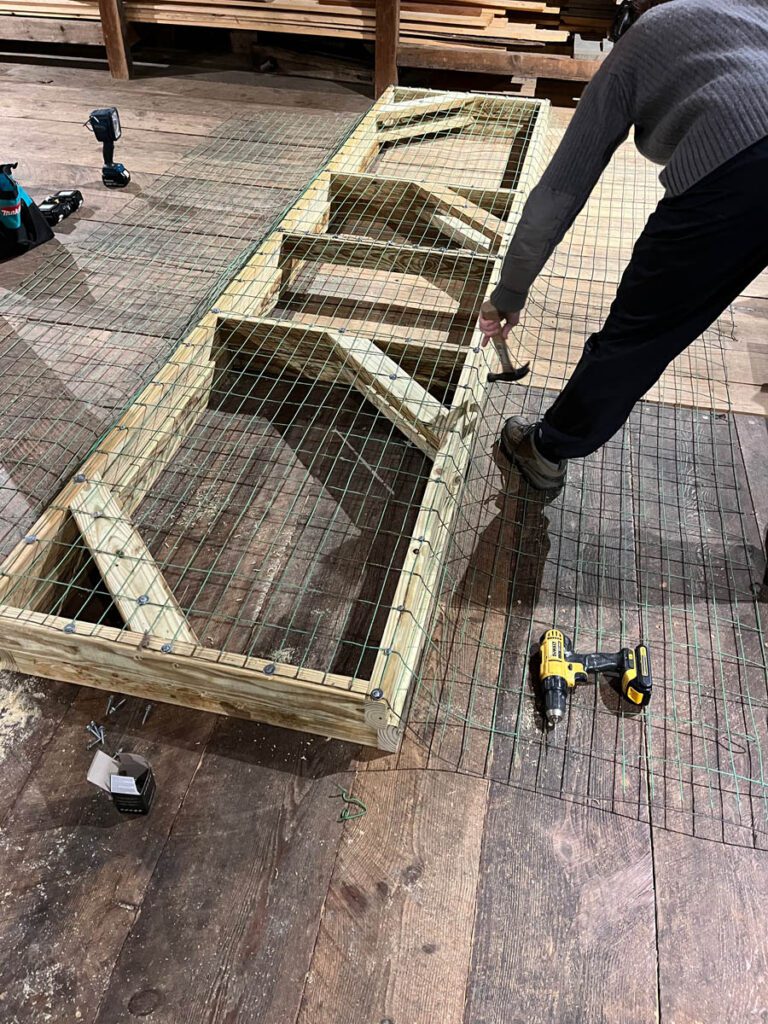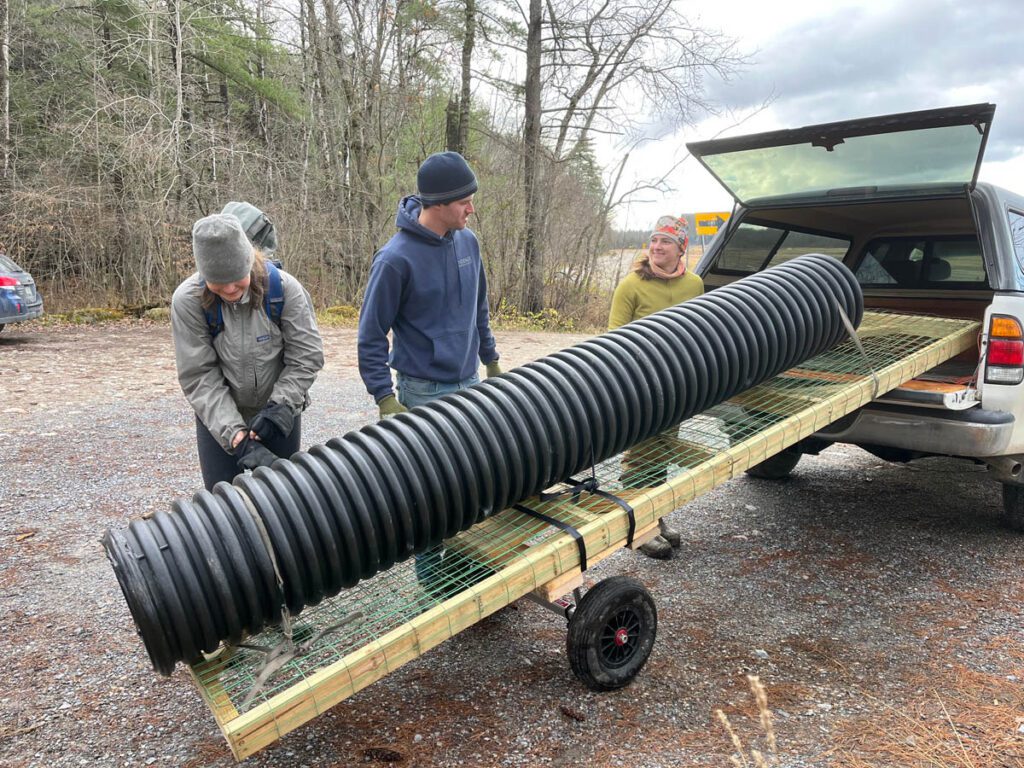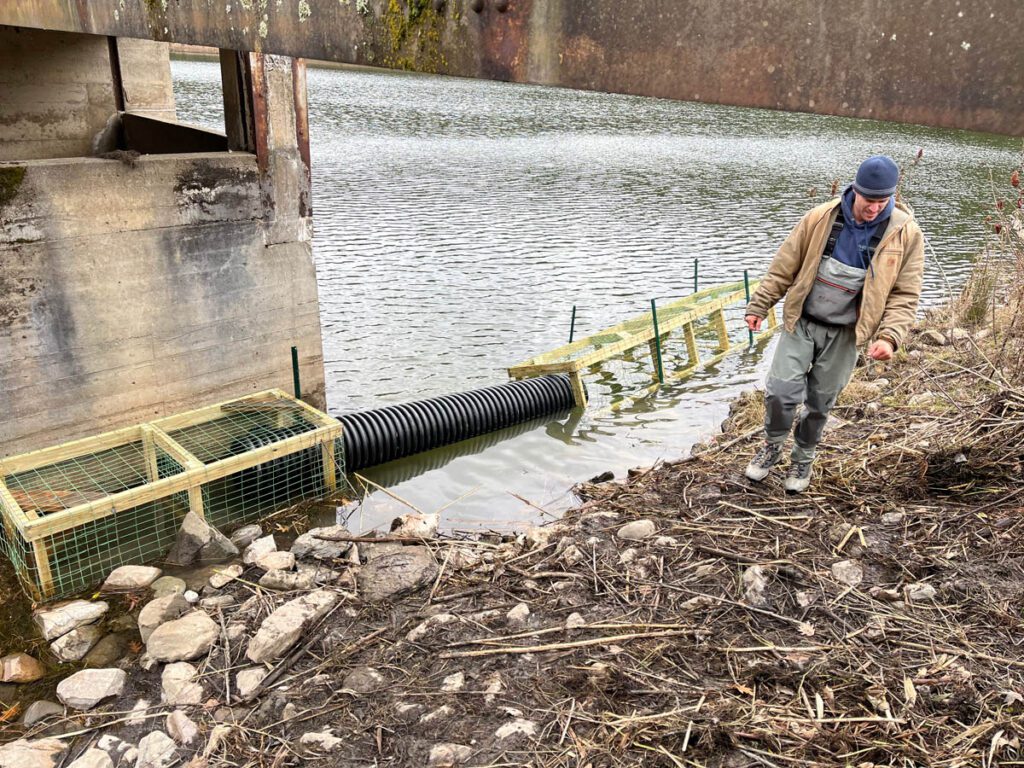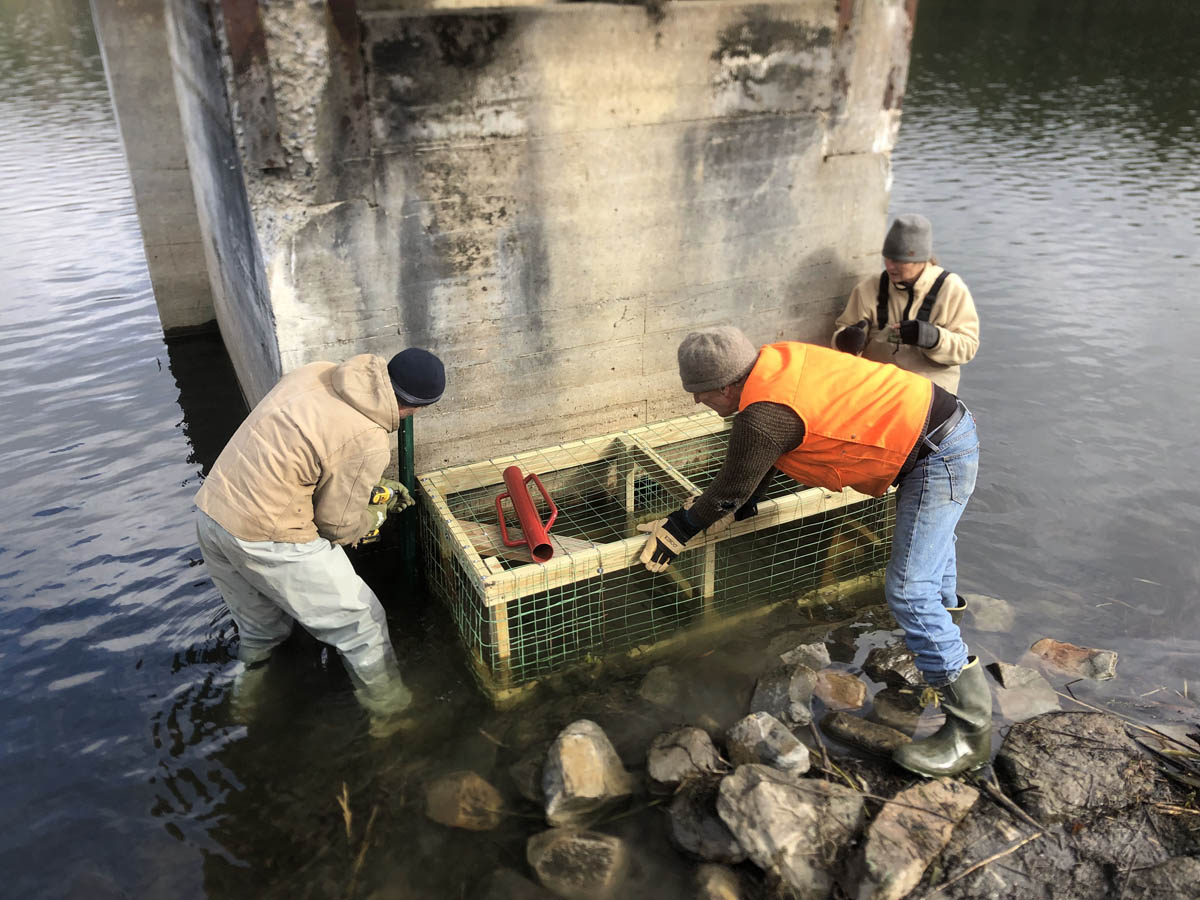
Building a beaver baffle at Norton Brook Reservoir
We love beavers. Plain and simple. In this time of rapidly changing climate, Job 1 in our forests is to slow, spread, and sink the flow of storm runoff—to keep water and soil in forests and out of rivers, lakes, and communities. Beavers walk that talk every day, putting their abundant creative energy to work slowing water flow whenever they can.
Their phenomenal dam-building prowess makes them a keystone species—one that has a disproportionately large effect on its natural environment and ecosystem. At the Lands of the Watershed Center in Bristol (also called the Waterworks), beavers have created and expanded core wetland habitats that are home to countless other species.
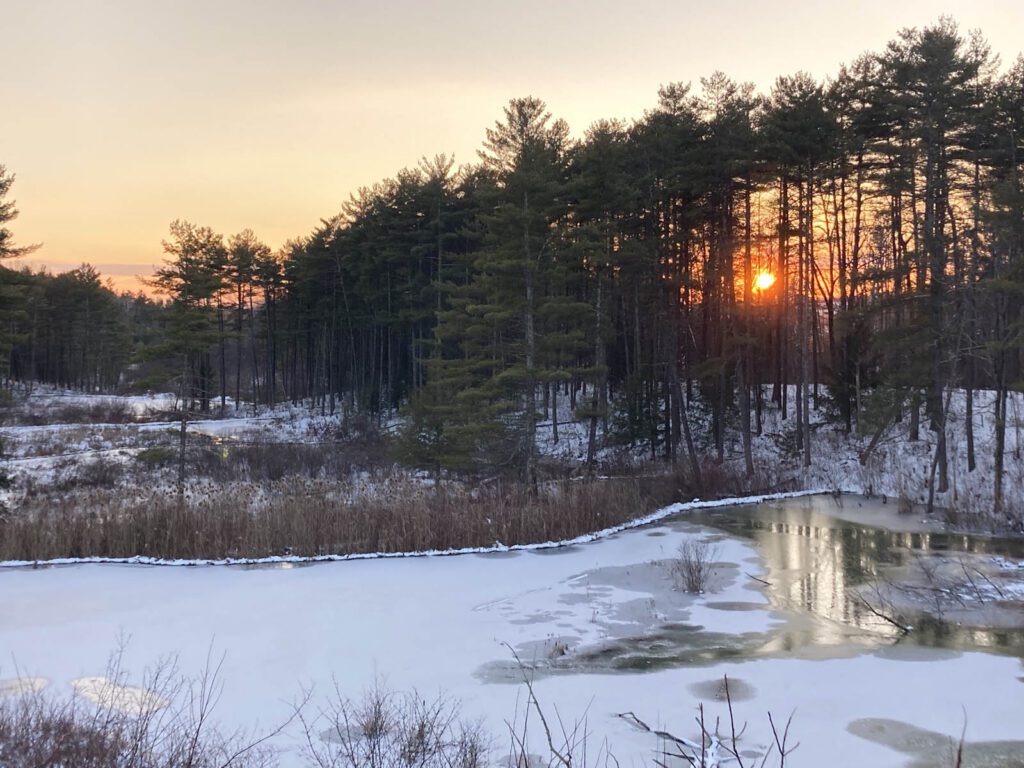
As you may have seen if you’ve walked at the Waterworks, the beavers’ work has had some noticeable impacts for people–some mild and some more significant. Cultivating a mutually beneficlal relationship with beavers has required a careful look at these impacts and an adaptive response suited to each situation. Back in 2021, we wrote about how, after years of periodically deconstructing beaver dams that flooded the main access path at the Waterworks, we helped The Watershed Center reroute that path out of the wetland, so the beavers could continue their wetland-building work undisturbed.
But just upstream, their impacts on the Norton Brook Reservoir called for a different response. A small gauging station stands in the shallows near the reservoir’s earthen dam. Three 10-inch openings in the gauging station’s foundation allow water to flow from the reservoir into a conduit under the dam, keeping the reservoir’s water level at or below a particular level. When those three openings are free and clear, you can hear the sound of rushing water long before you reach the gauging station.
There’s nothing quite so motivating to a beaver as the sound of running water, and the beavers worked hard to block those outlet holes with mud, stones, and branches. VFF’s executive director David Brynn and other board members of The Watershed Center made frequent forays to the dam to clear away debris. It became clear that the situation called for a more enduring solution.
So in early November, we worked with volunteers and board members from The Watershed Center to build a beaver baffle that we hope will keep the gauging station outlets free and clear for a long time. Together, we ferried materials and tools from the small parking lot on Plank Road to the reservoir gauging station.
We built the baffle sections on the dam, then hauled them into the chilly water (thank you, hip waders!) and secured them in place. A 6-foot long wire-fenced box protects water flow into the gauge station outlets. A 10-foot length of 15-inch culvert extends from this box out into a second 12-foot long wire-fenced box. The idea behind the baffle is that the water flows into the gauging station holes from a diffuse source. When it works well, it baffles the beavers so that they can’t identify the source and interrupt the flow.
So far, so good. Our fingers are crossed that we’ve hit on a lasting win-win solution. Here’s to the beavers and their beautiful Waterworks home—1,001 acres of forests, fields, and wetlands that are habitat and home to so many wild beings. Long may they prosper.
